#Southern lesser galago
Text
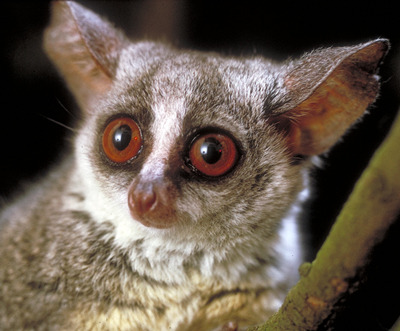

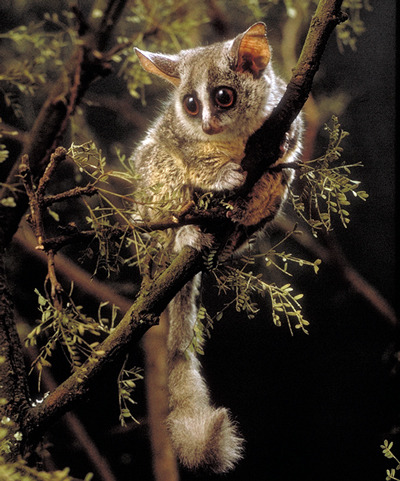
Go Go Southern Lesser Galago!
Also known as the South African galago or the mohol bushbaby, the southern lesser galago (Galago moholi) is a small primate from the Galagidae, or bushbaby family. As the name implies, they are located only in southern Africa, from northern South Africa up to Rwanda. Their preferred habitats are savannahs and semi-arid woodlands, where they can often be found high in the canopy, and they are particularly associated with Acacia trees.
The mohol bushbaby is one of the smaller members of its group; at full height they stand no taller than 15 cm (6 in) and weigh only 225 g (7.9 oz). In fact, their tail is longer than their body, easily reaching 23 cm (9 in) in length. While it isn't prehensile, the tail is still an important tool for climbing as it gives G. moholi an excellent sense of balance. Along with their incredible tails, the South African galago also has one of the largest sets of ears of any primate, proportional to its size; these ears can move independently to help the southen lesser bushbaby avoid predators. G. moholi's final distinguishing feature are their eyes, which are incredibly large and a distinctive orange color. Individuals themselves tend to be gray or light brown, which helps them blend in with their surroundings.
South African galagos are almost strictly nocturnal. At night, they forage through the canopy for moths and beetles. These bits of protein, however, are supplemental; the mohol bushbaby's primary source of food is gum, or hardened sap from the Acacia plant. G. moholi has several adaptations allowing it to specialize in gum extraction, including scraping teeth on the lower mandible; long, rough tongues; and digestive systems that have evolved to break down and ferment the tough substance. Because they have very few defense mechanisms, southern lesser galagos are a common prey for many nocturnal species like eagles, owls, snakes, mongooses, civets, and gennets.
One of the few ways the South African bushbaby avoids predation is through its social units. Groups of 2-7-- typically composed of a female, her young, and a few non-reproductive relatives-- forage together. In these groups, their collective night vision and highly-developed hearing allow them to detect and alert each other to predators long before the threat is immanent. While individuals forage seperately, they keep in contact via loud, high pitched calls that can serve as a warning for predators, a point of contact between mother and offspring, or a territorial warning between males.
Male G. moholi live seperately from social groups, and are highly aggressive against other males invading their territory. This area often overlaps that of several female-led groups, but they only come in contact with each other during the mating season. Unusually, the species has two mating seasons through the year; from January to Februrary (late summer) and from October to November (early spring). Following a gestation period of 120 days, females produce a single set of twins each mating season. Each set is weaned after approximately 3 months, and young become fully mature at 300 days. Female offspring may join the mother's group, while males leave to establish their own territory. In the wild, an individual may live up to 16 years.
Conservation status: The IUCN has classified the South African bushbaby as Least Concern. Studies have indicated that the population is stable and, in some areas, increasing. However, in other areas the species is threatened by habitat loss and possibly capture for the pet and bushmeat trade.
If you like what I do, consider leaving a tip or buying me a ko-fi!
Photos
Gerald Doyle
Peter Webb via iNaturalist
#Southern lesser galago#south african bushbaby#Primates#Galagidae#galagos#bushbabies#mammals#savannah mammals#tropical forest mammals#africa#south africa#animal facts#biology#zoology
164 notes
·
View notes
Photo
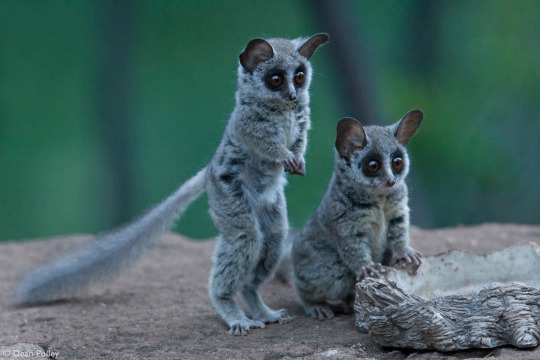
Bushbabies – The Southern Lesser Galago - Africa Geographic.
How extremely cute <3 <3
1 note
·
View note
Photo
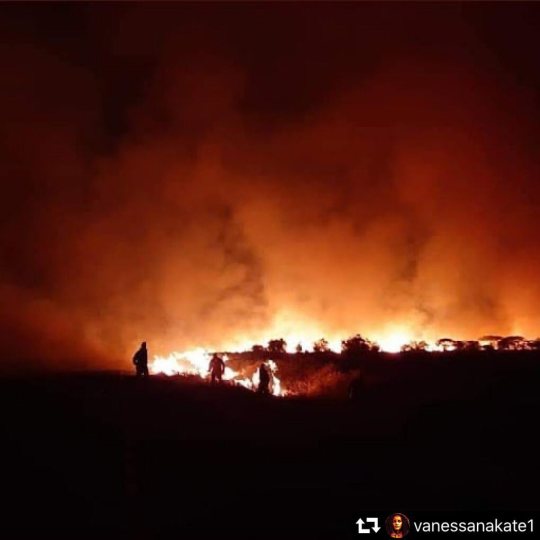
Repost from @vanessanakate1 🔥Tsavo National Park in Kenya is on fire、we don't see any media coverage。 Alert people about what is happening。It has been burning and these are the animals in danger:the aardwolf、yellow baboon、bat、Cape buffalo、Senegal bushbaby、bushbuck、caracal、African wildcat、southeast African cheetah、African civet、Kirk's dik-dik、African wild dog、African dormouse、blue duiker、bush duiker、Harvey's red duiker、common eland、African bush elephant、bat- eared fox、northern greater galago、Grant's gazelle、rusty-spotted genet、common genet、gerenuk、giraffe、African savanna hare、springhare、Coke's hartebeest、Hunter's hartebeest、East African hedgehog、spotted hyena、striped hyena、yellow-spotted rock hyrax、southern tree hyrax、impala、black-backed jackal、side striped jackal、klipspringer、lesser kudu、leopard、lion、banded mongoose、dwarf mongoose、Egyptian mongoose、marsh mongoose、slender mongoose、white-tailed mongoose、vervet monkey、Sykes 'monkey、fringe- eared oryx、clawless otter、ground pangolin、crested porcupine、cane rat、giant rat、naked mole rat、honey badger、bohor reedbuck、black rhinoceros、serval、elephant shrew、bush squirrel、East African red squirrel、striped ground squirrel、unstriped ground squirrel、suni、common warthog、ellipsen waterbuck、plains zebra and Grevy's zebra。Over 500 bird species are also in danger such as ostriches、kestrels、buzzards、starlings、weaver birds、kingfishers、hornbills、secretary birds and herons. Daring local media and international media to report about this and see how the fires can be stopped。If you have resources on how people can help、please share here。And for the rest of us、please share any tweets or posts about the fires in Tsavo National Park . . . #fire #2020 #help #kenya #kenyafire #govegan #sosplanet #sosearth #earth #earthlings #earthling #pleaseshare https://www.instagram.com/p/CDteXE8n_lm/?igshid=xuff4kprf8es
0 notes
Text
POTIONS | October 6th | Lesson #15 | African Potions
Western Witches and Wizards, particularly the maheka-lala, or the Curse-Breakers of Gringotts are still seeking the true nature of Egyptian Magic, or heka. In fact, the Magical communities
of Egypt now have no recollection of this heritage of powerful and advanced
magic either, and the magic practiced there now can best be characterized as
Western in nature.
However, one of the ingredients endemic to Potions in Northern Africa, particularly those brewed in Morocco, contains flowers and essential oils from the argan tree, a species of tree in the Sous valley in southwestern Morocco. The flowers of the argan tree are used in beautifying creams as well as slimming and thinning potions. The oil, meanwhile, has widespread use in North African
Potioneering, being utilized not only in different beautifying potions, but
also love and lust potions, and certain healing potions, particularly those
that cure digestive issues, ulcers, and other stomach problems.
There are a few species native to North Africa that are still used in region-specific potions. The first of these is the Fat-Tailed Scorpion, of the genus Androctonus, whose etymological root comes from the Greek for “man-killer.” The tail of this scorpion is used in certain strong antidotes to poison, and can also be used in powerful anti-venoms. The claws meanwhile can be used in potions that increase an individual’s stealth and cunning.
The Egyptian Cobra is another popular ingredient - as well as occasional Witch or Wizard pet - in North Africa. Despite its common name, this snake can be found across most of North Africa and parts of the Middle East, as well as across the savannas of West Africa, and even parts of East Africa. The blood of this snake is a very powerful ingredient, and it is thought that the skin of the hood of the Egyptian Cobra may be one of the important ingredients in the mysterious Drink of Despair, occasionally known as the Emerald Potion. The use of the hood of this cobra is illegal in most parts of the Magical world.
A very important animal that, while it can be found elsewhere in the world,
originally came from Egypt is the phoenix. The feathers of the phoenix will be well known to students in Great Britain, as it is one of the three cores that the
Ollivander family uses exclusively in their wands. While phoenix tears are on
their own magical curatives, these tears can also be used in very powerful
curing potions. Phoenix tears are exceedingly rare and difficult to track down
by legal and ethical means, so these potions are not often used.
One relatively unique aspect of North African Potioneering that is seen, though to a lesser extent, in Central and Eastern African regions is the use of chips of
metallic and stone elements in Potioneering, often heavily utilizing the
substances alchemic principles. For instance, there is an incredibly power love
potion that was invented in the sixteenth century in Morocco that utilizes not
only dates from the date palm and two spines from the crested porcupine, but
also incorporates shavings of copper as one of its major ingredients.
Traditionally, Witches and Wizards of Southern Africa took the role of shaman, priest, healer, and occasionally even leadership positions within their communities, mostly of the San, Bantu, and Khoikhoi people, although those of the Zulu nation arrived a little later in the region’s history. Potions were not quite as commonly used as healing energies, healing charms, and even runic enchantments. However, traditional plants native to Southern Africa were used in potions primarily brewed for healing, protection and strength, and dreams. For example, the leaves of a plant native to South Africa known as Uzara are used in antidotes to uncommon poisons. Meanwhile, the roots of the plant Silene
pilosellifolia are used in several Draughts of Vivid Dreaming.
One of the most powerful protective potions known to Wizardkind is, in fact, a
highly complicated and time-sensitive concoction that comes from Southern
Africa composed of the blood of a Blackhead Persian sheep, the eyes of a galago (more commonly called a bushbaby), and charred wood chips from an African date tree. This potion, while it will not defend the taker from all harm or disease, will make them resistant to many forms of dark magic and assault. Few have managed to brew this protective potion successfully, and none off the continent of Africa, interestingly. Galago eyes are also used in other protective potions, which, while they are not quite as efficacious as the Staalhart Serum, are still quite handy, and can be brewed in Europe and Great Britain.
These days, much of the Potioneering in urban South Africa is heavily influenced by the European Witches and Wizards who arrived during the colonization of the
region. Although Wizarding kind has often been in close contact and agreement
in other situations of colonization and influx of magical and non-magical kind
from elsewhere, there was a good deal of strife and tension between the Witches and Wizards who lived in South Africa and those who arrived with the colonizers in the 17th century and onward. There was, in fact, a twenty-year conflict between the magical South Africans and Dutch-descended Witches and Wizards at the beginning of this century that only ended when the International Ministry stepped in to control the situation. The conflict is now known as Die Draai or “The Turning.”
Also a well-known symbol in East African non-magical populations, particularly among the Maasai, the zebu or Brahman cow is one of the unique elements of East African potioneering. While they have myriad uses in Kenya and Tanzania for dairy, meat, and draught oxen, their tongue, hooves, blood, and liver also have several unique uses in Potions. Scrapings from their hooves, for example, can be used in potions that very rapidly heal blisters, sores and other cuts, while
their tongue is often used in secrecy or silencing potions. These are potions
which, in conjunction with specific complicated spells, can prevent a person
from speaking about a particular topic or revealing a secret. Though not as
dire as a blood oath, as they can be overcome without harm by a very strong
mind, they are still very tricky potions with which to manage.
Feathers of the Superb Starling (Lamprotornis superbus) are also used in
beautification potions, and are in fact occasionally used as pets. When they
are used as such, they are not poached for their feathers, but rather collected
from the cages and enclosures to keep for potioneering. The specific
beautification potions for which they’re used promote smooth, blemish free skin
and thick, smooth hair. Dried feet of these starlings are also used for
muscle-building potions and potions that encourage toning of the body. While
these potions will not alter the composition of the body on their own, they do
seem to impact the overall metabolism and resource allocation, so that physical
exertion has a faster and more robust impact on the Witch or Wizard who
consumes it.
In the past five decades or so, the magical population in Central Africa has
dropped greatly, with much of this population traveling to West Africa, in
consideration of seeking to escape Muggle conflicts. Many families also desire
to be located closer to Uagadou, and as such, there have been much larger
Magical communities established in Mali and Burkina Faso.
1 note
·
View note
Text
National Parks to Visit in Kenya
Kenya is a country which lies on the east of the African continent and has a coastline on the Indian Ocean. The country has a lot to offer in terms of tourism and tourist attractions. Here is a list of the top national parks and reserves that you should visit on your next trip to the country.
1. The Masai Mara National Reserve
This is the most popular game reserve in the country. It is internationally acclaimed for the annual wildebeest migration that takes place around July to October. over two million animals migrate from Tanzanias Serengeti National Park to the greener pastures of the Masai Mara National Reserve. This event is dramatic as predators such as crocodiles, hyenas and lions lie patiently ready to attack the weakest of the migrating herds.
2. Lake Nakuru National Park
Also known as the bird-watchers paradise, the lake Nakuru National Park truly lives up to its name. It is best known for thousands, or rather, the millions of flamingos that come to nest along the shores. The major attractions of this park include the lake itself, different bird species along the shore, eastern black rhinos as well as the endemic southern white rhinos, cheetahs, lions, pythons and so much more! You can book a our with us here: http://www.mervinsafaritours.com/excursions/2-days-lake-nakuru-with-nairobi-city-tour for a chance to experience Lake Nakuru National Park.
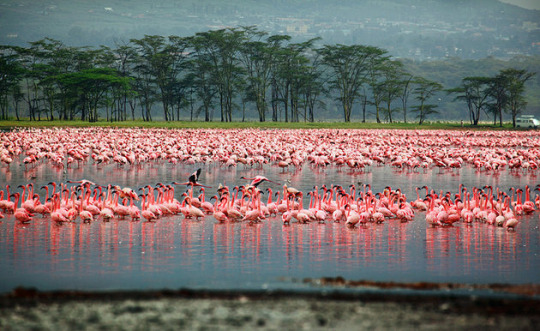
3. Tsavo East National Park
This is amongst the largest parks in Kenya covering an area of 13,747 square kilometers and is located in a semi-arid area formerly known as the Taru Desert. The major attractions of this park include: the worlds largest plateau, the Yatta Plateau, the Lugard Falls, Mudanda Rock, the Aruba Dam and an array of mammals including Tanzanian cheetah, African civet, dik-dik, African hunting dog, African dormouse, blue duiker, bush duiker, red duiker, eland, elephant, bat-eared fox, greater galago, gazelle, large-spotted genet, small-spotted genet, gerenuk and so much more!
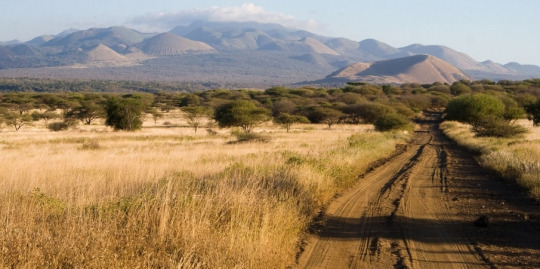
4 . Tsavo West National Park

Covering an area of 9,065 square kilometers, the Tsavo W. National Park together with the Tsavo E. National Park comprise the Tsavo Conservation Area. the major attractions in the Tsavo west National park include: bushbaby, hartebeest, lesser kudu and Masai giraffe amongst others. You can also enjoy other adventurous activities such as rock climbing.
5. Amboseli National Park
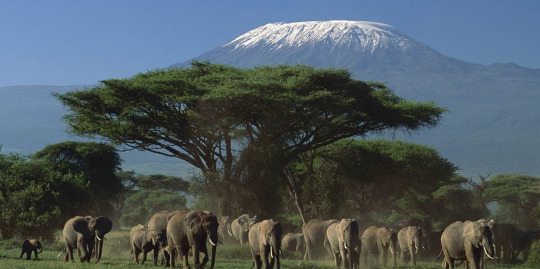
The Amboseli national Park is home to elephants, Cape buffaloes, impala, Masai lions, cheetahs, spotted hyenas and so much more. The park is located on the foot of the highest mountain in Africa, Mt. Kilimanjaro. This means that other than wildlife, you shall also get to see the magnificent views of the Kilimanjaro.
6. Shimba Hills National Reserve
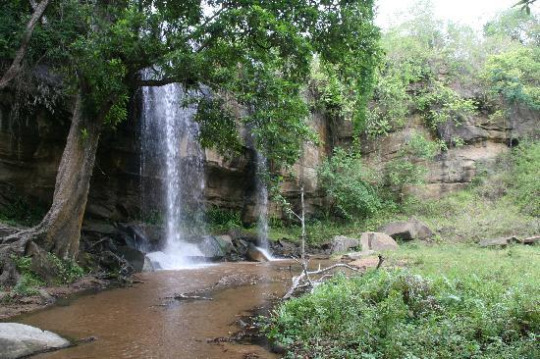
The reserve boasts of hundreds of elephants, various bird species and Kenya's only population of Sable Antelope. the Sheldrick Falls is also a major attraction at the reserve.
7. Samburu National Reserve
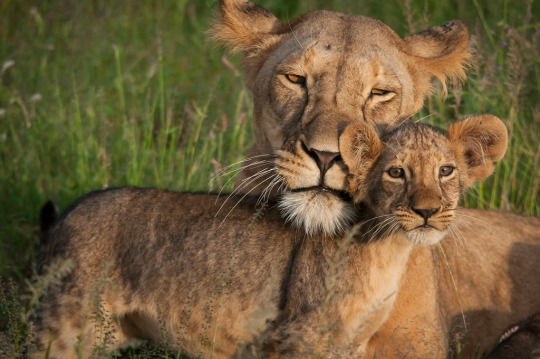
Located on the banks of River Ewaso Nyiro, is the Samburu National Reserve. The reserve is home to olive baboon, warthogs, Grant's gazelle, Kirk's dik-dik, impala, and waterbuck. The rhinoceros population is no longer present in the park due to heavy poaching. The reserve also hosts a variety of bird species such as grey-headed kingfisher, sunbirds, bee-eaters, Marabou stork, tawny eagle, Verreaux's eagle, bateleur, vulturine guineafowl, yellow-necked spurfowl and so on. Be sure to visit the reserve on your next trip to Kenya.
0 notes
Video
galago moholi by Joachim S. Müller
Via Flickr:
#Galago moholi#south african bushbaby#south african galago#southern lesser galago#mohol galago#mohol bushbaby
3 notes
·
View notes